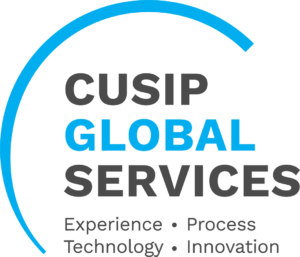November 13, 2019 - Updated December 4, 2019. ESG and sustainability are two buzzwords that crop up more and more in the financial markets – the loan market included. According to Bloomberg, $97 billion in green loans and sustainability linked loans have come to the global loan market in the first three quarters of 2019. Of that activity, more than $55 billion in volume represents sustainability linked loans. It is that activity that was the focus of the LSTA’s recent webcast, “The Rise of Sustainability Linked Loans” presented by Amara Gossin (Barclays), Robert Lewis (Sidley Austin) and Tess Virmani (LSTA). A sustainability linked loan (SLL) economically incentivizes the borrower, typically through margin, to achieve ambitious, predetermined sustainability performance targets (SPTs). The loans are not pure green financings – like green loans – but they are an important form of specialized financing to help clients make the transition to more sustainable business models. In this way they stand apart as a transition tool and an SLL could be made to any company that has a sustainability plan and it will reward that company for achieving the goals set out in that plan.
The broad applicability means that the industries from which SLL borrowers hail could run a wide gamut, but several sectors jump out as particularly likely candidates. Both the energy/utilities sector and REITs benefit from the fact that potential metrics in these spaces are straightforward and readily accessible (e.g. amount of green-certified square footage, GWhs of renewable energy production) which allow them to quickly and easily provide a basis on which sustainability can be assessed. The Industrials sector is another good candidate where a company may look at its waste stream or perhaps renewably sourced inputs for the production of its product. Interestingly, financial services could be another industry that sees SLLs if a particular fund or user of financing has ESG investment strategies in its portfolio which may then serve as a metric.
So we can easily see why borrowers are attracted to SLLs – it demonstrates a borrower’s commitment to sustainability in its core business and the borrower enjoys lower borrowing costs. But, what is in it for the lenders? Quite a lot. First, SLLs are one way of serving customers on their transition path and that is why we have seen relationship banks participating in this space. Second, by paying special attention to the economic cost of environmental change, there may be a better credit story for that borrower which then merits the discount in pricing. Third, banks just like corporates and nonbank investors are focusing on how they can promote ESG in finance and participation in SLLs can be a useful communication of that effort. Finally, it is premature for the US market, but capital relief is being considered in Europe, and may be possible in the future in the US.
Delving in to the Sustainability Linked Loan Principles and the core components that the framework sets forth, the speakers looked at each in turn: 1) relationship of the selected SPTs to the borrower’s overall CSR strategy, 2) target setting, 3) reporting on the borrower’s performance with respect to the relevant SPTs and 4) the need for external review which is negotiated on a deal-by-deal basis. A fuller review of the core components can be found here, but the speakers noted some helpful considerations around these components described below. With respect to selection of the sustainability metric and setting of the SPT, it is really borrowers who have the obligation to determine that the chosen metric is meaningful – meaning core to the borrower’s business – and ambitious – meaning a target that represents a reach and true transition. Certainly, lenders do also play a role and will question the chosen metric and SPT to ensure that they are reasonable. One of the arrangers may even serve as the sustainability coordinator and help facilitate this dialogue between the borrower and the lender group, but for everyone involved the primary objective is legitimacy. In some circumstances, it may be helpful to engage an external reviewer to determine if targets are ambitious for the borrower and that borrower’s industry. This is just one of the way in which a third party may provide an external review. Separate, but related, is where a company seeks an external ESG rating that then serves as the metric for the SLL. Other than external ratings, only one of the US public deals uses a third party to establish its sustainability target. The absence of an external review in the other cases is due to the fact that the metrics/targets chosen in those transactions were publicly available and had been reported for some time so lenders could easily make their own determinations.
Finally, the speakers looked to the credit agreement implications arising out of SLLs. The first consideration is that the source for the baseline metric and the level of the baseline metric itself must be clearly identified in the credit agreement. Second, the measurement for improvement must be carefully considered. Is it a change in the absolute value of the metric or a percentage change? In some cases, to prevent the mere perception of potential manipulation, a blend of both have been used. Relatedly, what information is being relied on for measuring that target – internally prepared compliance certificates or is it other publicly available data? Third, reporting on the metrics should be required at least annually and contractual protections should permit the lenders to retroactively recover any deficiency in payments in the event there is incorrect reporting of the SPT. A helpful Lexis Practice Advisor article authored by Amara Gossin and Bob Lewis highlighting these considerations is available here. This is an exciting and constantly evolving area of the loan market and one the LSTA is actively monitoring. We will be sure to keep our members apprised of market developments. For further information, please contact Tess Virmani (tvirmani@lsta.org).





